If it is not clear how Saint Valentine’s Day came to be a day for the celebration of love and affection, it is equally unclear how the heart shape became the symbol of romantic love. Some researchers believe that the heart shape originated from an ancient plant called silphium that was used by the Greeks and Romans for several purposes including birth control. Others speculate that the heart shape as we know it today, evolved from designs that modeled the shape of breasts or buttocks. Be it however, the heart symbol we use today, entered pop culture, became an icon for affectionate communication and is here to stay.
So let’s make a heart to celebrate Saint Valentine's Day!
Photo tutorial for a felted heart with a crochet border
4 grams of wool batting (3.4 g in one color and 0.6 in another contrasting color.)
1 felting needle (size 40 or 42), a multi-needled felting tool is optional.
felting mat
heart shaped cookie cutter (in two sizes, only larger size shown)
Cotton thread for crochet (similar in color to your felt.)
(I used Aunt Lydia's #3 Mercerized Cotton in warm rose.)
2mm metal crochet hook (not shown)
4 mm glass beads
small eyed sewing needle
sewing thread (similar in color to your felt)
digital scale (optional but recommended)
Stitches used (US terms):
sc - single crochet / UK dc
dc - double crochet/ UK treble
tr - treble crochet / UK double treble
large shell - sc, dc, tr, dc, sc
small shell - sc, dc, sc
1. Place about 3 g of the wool, in small pieces, in the middle of the larger heart shaped cookie cutter. (Do not cut the wool, simply pull it apart.)
2. Take your felting needle and begin poking the wool lightly, until it sustains the shape of the heart around the edges. In my case, since I was using a small cake pan, I was careful not to stab too deep so as not to hit the bottom of the pan and break my needle.
4. Continue poking to create a firm heart shape. You may use a multi-needle tool, for the center of the heart, if you like at this point. But return to the single needle for the edges and final shaping. It will take quite a lot of poking to get the heart to a firm state. As long as you can separate and move the fiber with your needle you need to continue poking. Watch for holes or areas that are too thin and feel free to add more wool to fill the gaps.
6. Take the small cookie cutter and add a small amount of wool (between 0.6 g to 0.75 g) and work the same as for the larger heart.
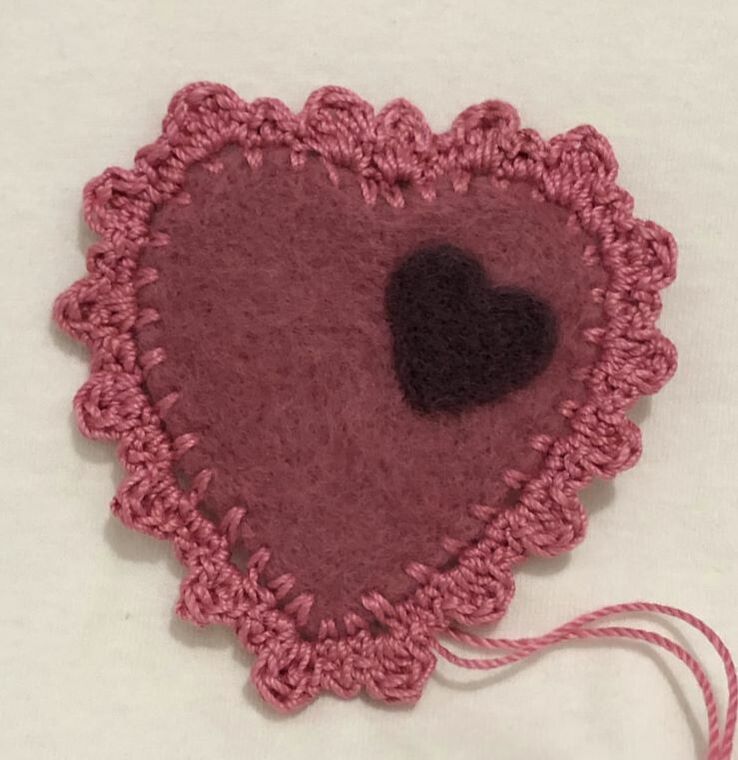
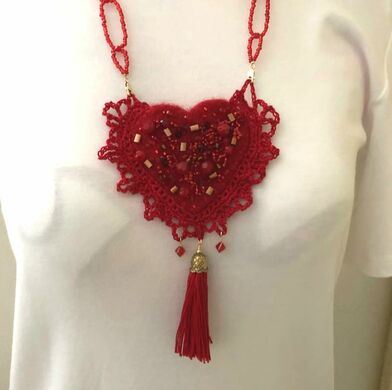
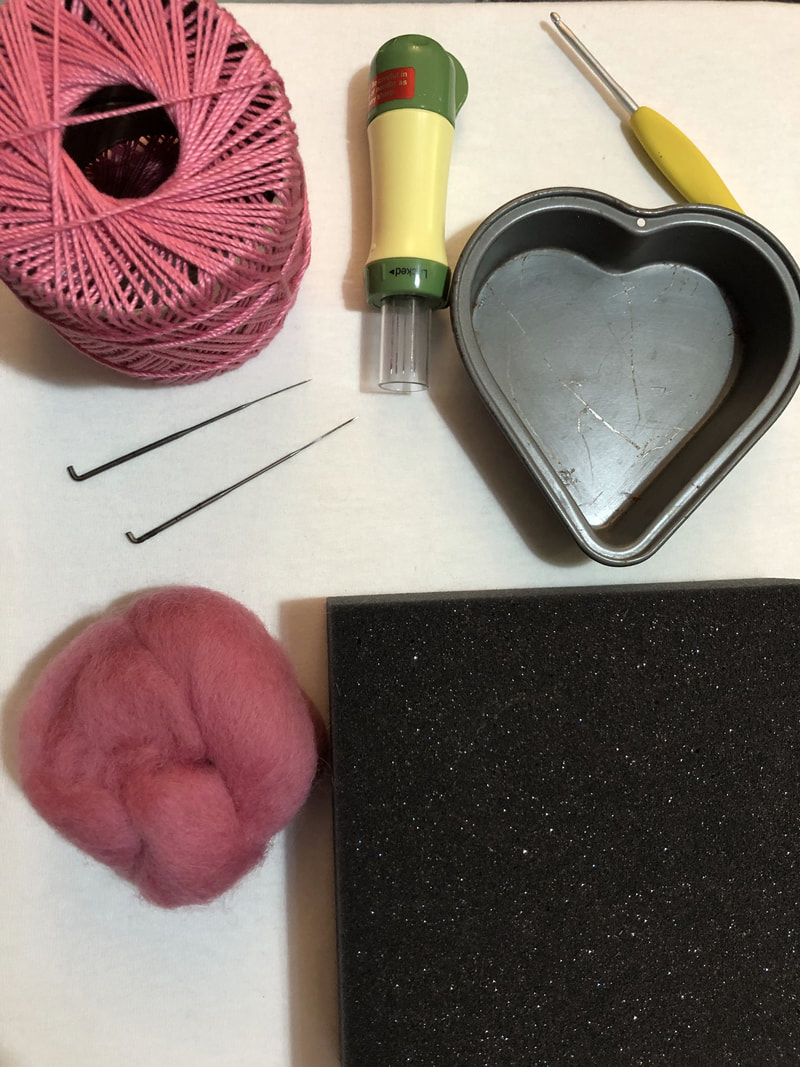
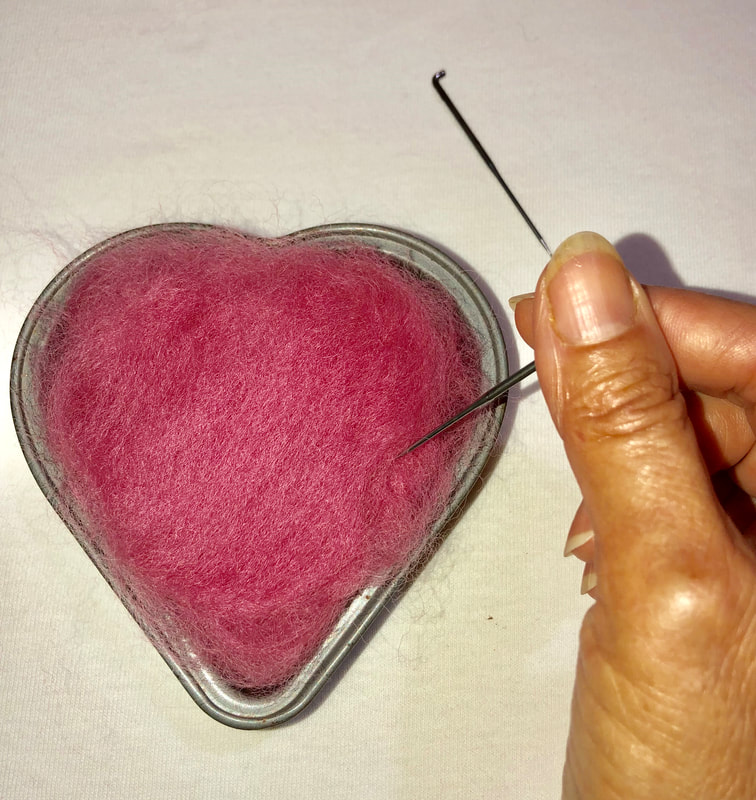
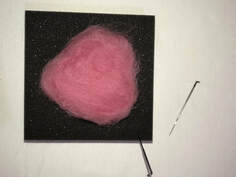
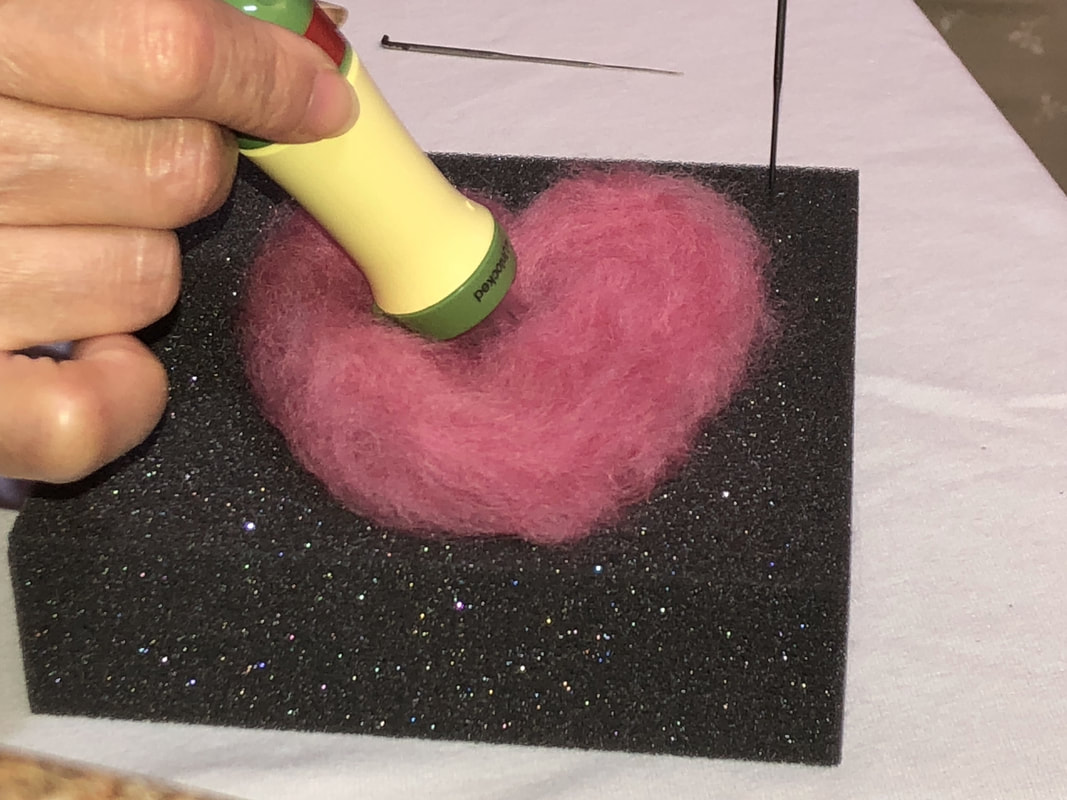
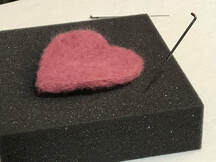
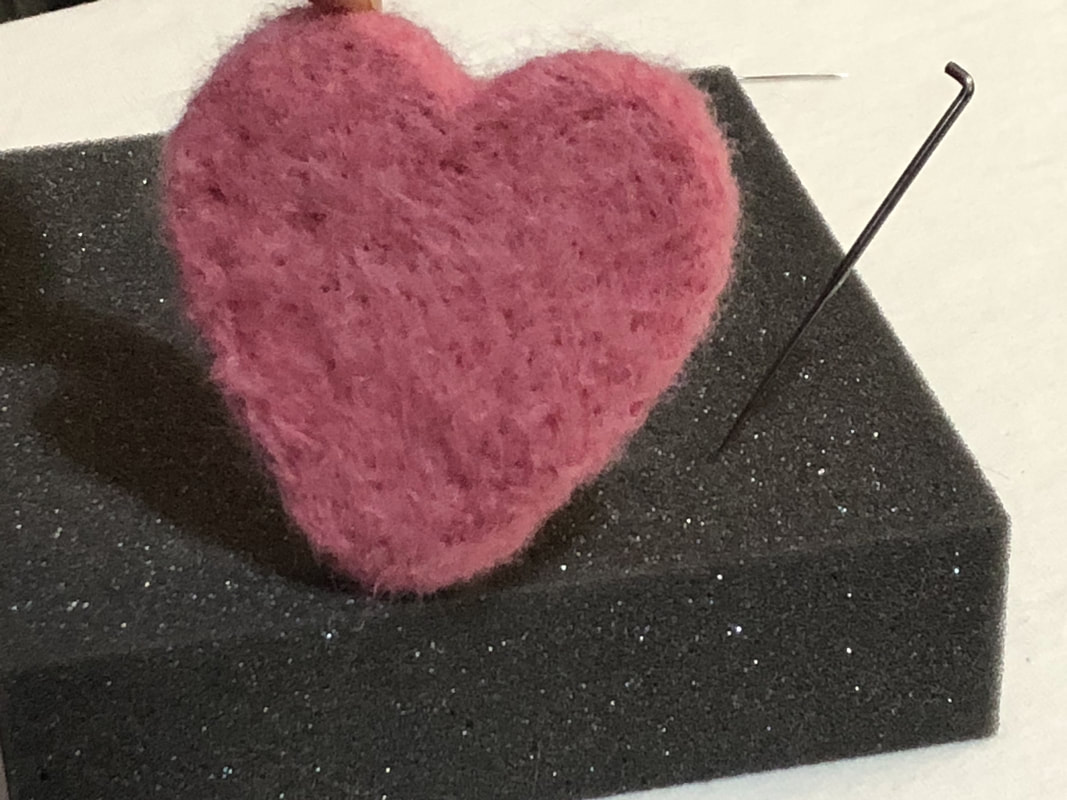
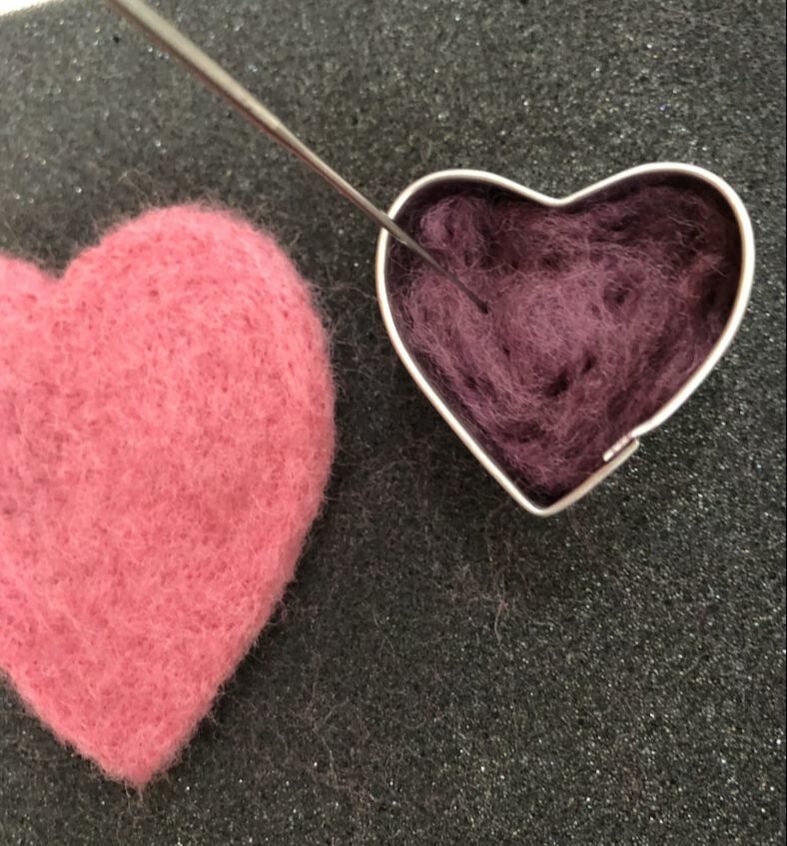
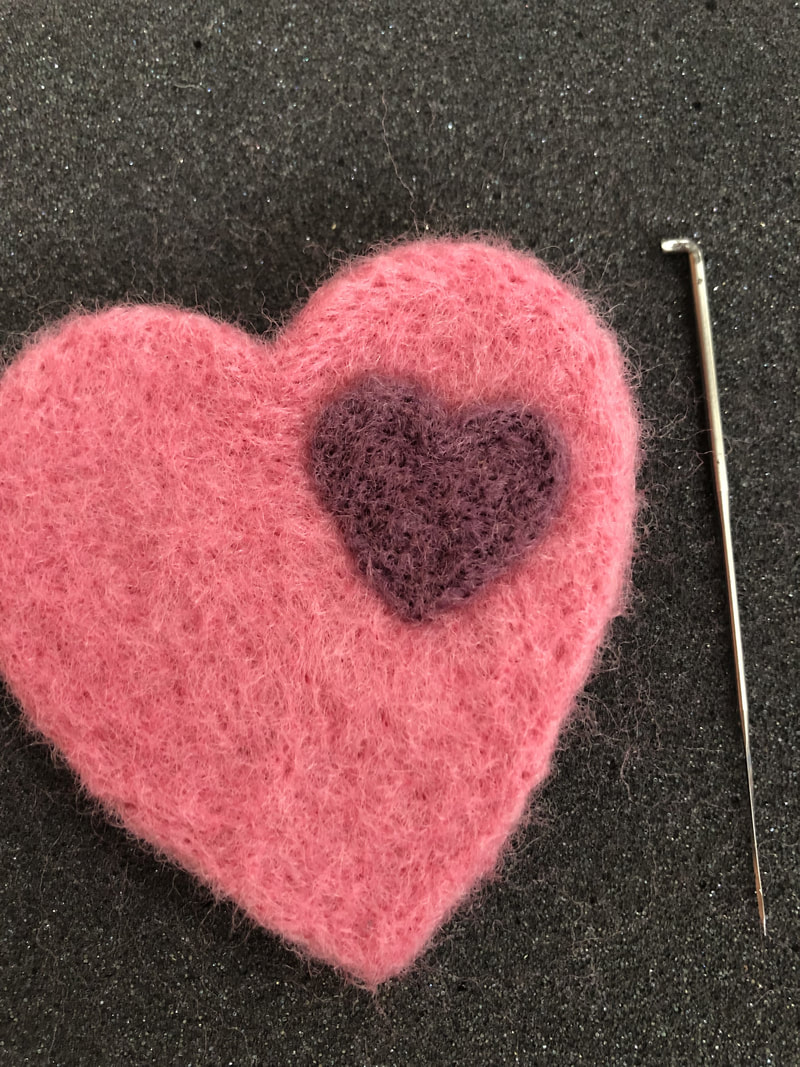
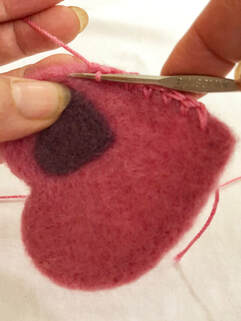
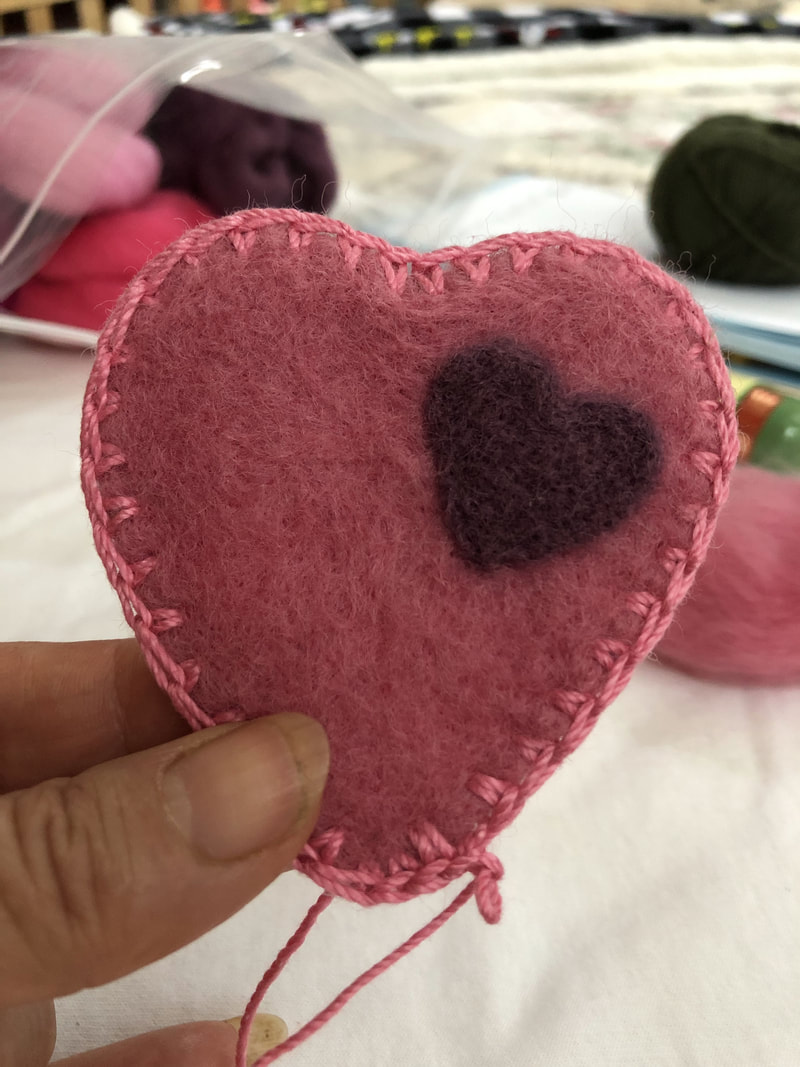
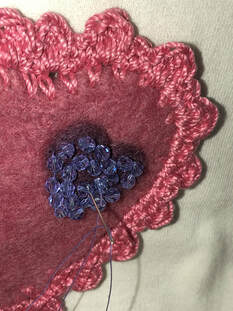
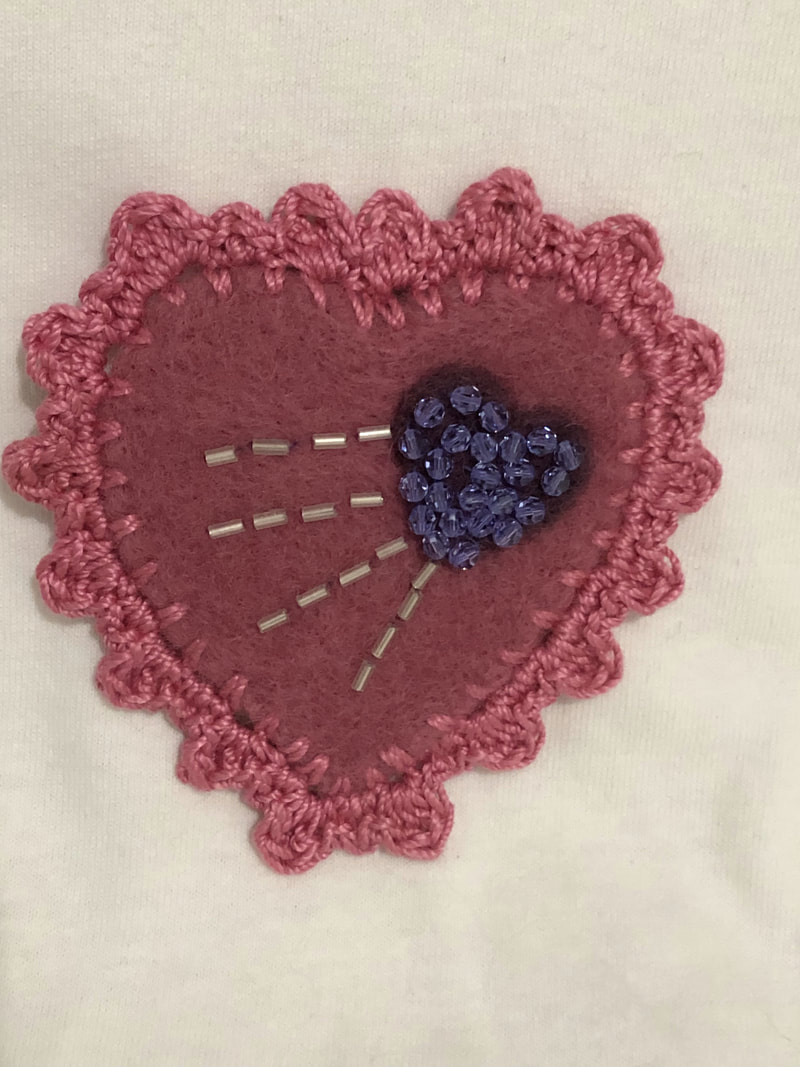
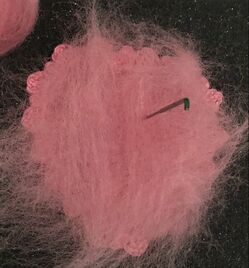
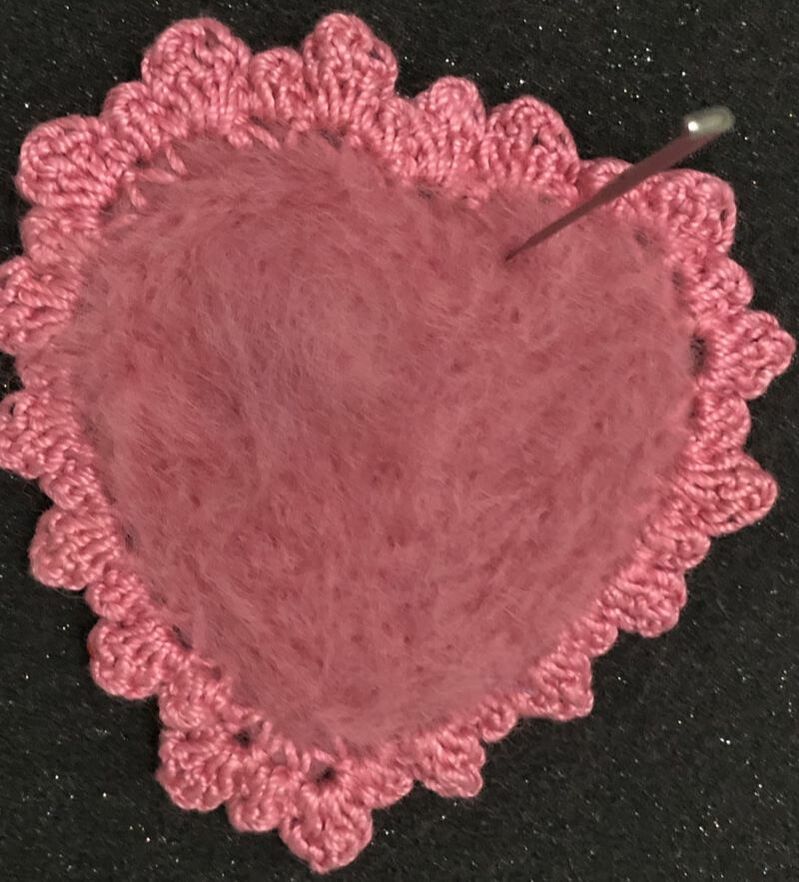
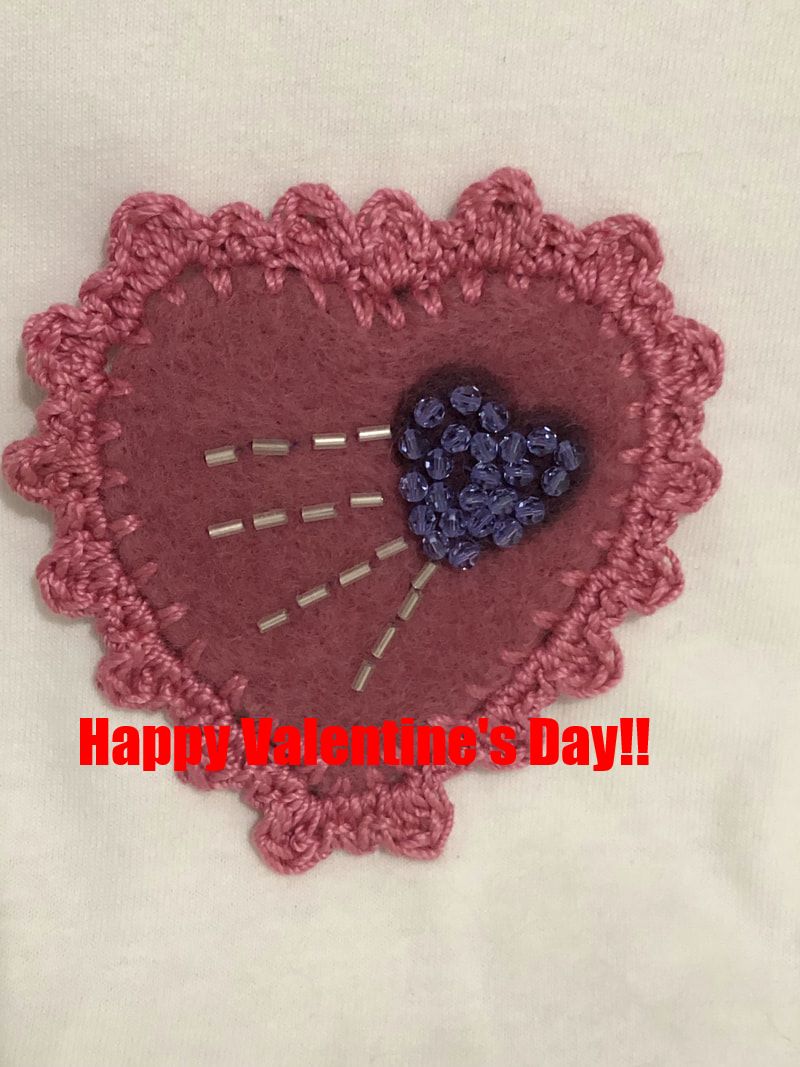
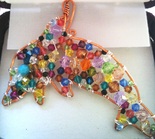
 RSS Feed
RSS Feed
